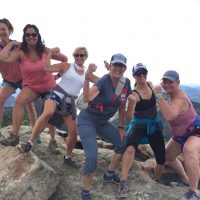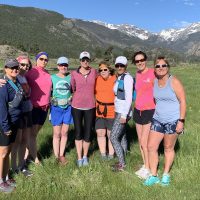
Trail Running is a rapidly growing sport in the USA, and Worldwide, many runners switching from road running to trails to enable a deeper connection with nature, explore new terrain, and also ease wear and tear on an athletic body.
I arrived in Colorado as a road runner from the UK, and quickly fell passionately in love with running mountain trails. However one of my first trail runs didn’t end well. I was half way round a loop near Estes Park, in RMNP, and rounded a corner planting my left foot on what looked like a solid rock. Unfortunately that rock wasn’t solid, and I turned my ankle heavily, hobbling to a halt.
The combination of wearing road shoes with heavier cushioning, and my road runner gait, left me lacking rapid proprioceptive feedback, and I was unable to react in time to the change in surface below my foot. That sprained ankle kept me out of running for 2-3 weeks; during that time I had the opportunity to evaluate what had happened – as a result I made two decisions:
- To wear shoes that would enable me to “feel” the terrain more and be able to react more quickly to changes in surface
- To change my running style so that I could become more balanced on trails
Changing to trail shoes solved item number one, a pair of Brooks Casacadia’s recommended by a friend at Fleet Feet Sports, Boulder. Changing my running style meant increasing my cadence so that each footplant was closer to my center of mass. In their excellent book, The Ultimate Guide to Trail Running, Adam Chase and Nancy Hobbs, talk about trail running technique, and recommend a higher cadence and shorter stride as it “allows you to quickly alter direction and select the best route, one that offers the best traction and fewer obstacles.” Adopting a an increase in cadence also “is an efficient way to govern descent pace and prevent joint and impact injuries.”
Once I understood that running is really controlled falling forwards, I became a more balanced, smoother, and faster runner on trails, learning to be supple and more gentle on my body. I have turned my ankles on many many runs in the eight years since that first trail injury, each time being able to react and adjust, never experiencing another sprain, and continuing to enjoy my adventures on the trails. I now float and dance on the trails, sometimes thinking of how my bare footed ancestors used to travel the land here.
These techniques have not only helped my trail running – whenever I run on roads now, I find that I am lighter and faster on my feet, and the impact of the harder surface is lessened on my listening and aware body. Of course I miss the opportunity to return to dancing on the trails, and am always eager to return to nature!
Traction is another important part of trail running and maintaining balance and forward progress. Trail shoes have been developed with various designs of outsole to help us maintain traction on a variety of surfaces. One traction system that I have used to great effect on both mud and ice / snow is Icespike. They are patented and specially designed screws that are simply placed into the sole of your trail shoe, and provide traction whenever you need it in slippery conditions. They have performed extremely well for me on muddy trails throughout the year, and in snow and ice during Winter and Spring. One of the factors I like best about them is that they don’t affect your normal running style, they are extremely light, so much so that I sometimes forget I am wearing them! When it comes to maintaining balance on the trails in slippery conditions, Icespike is my number one go to product!



